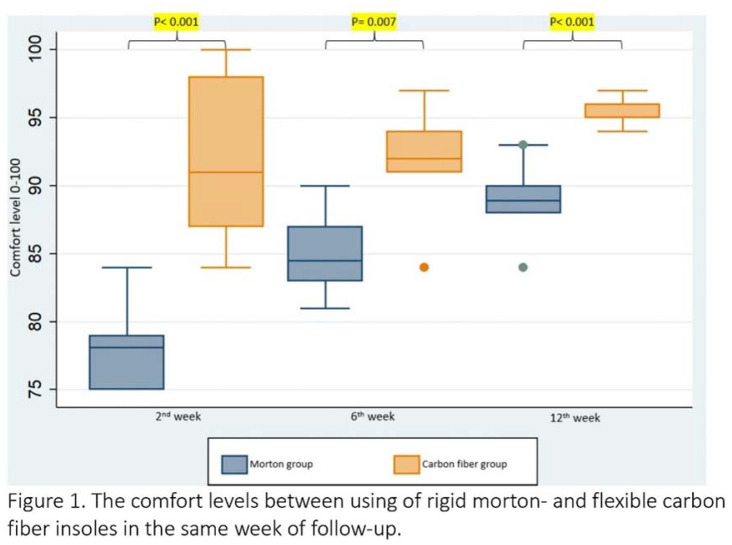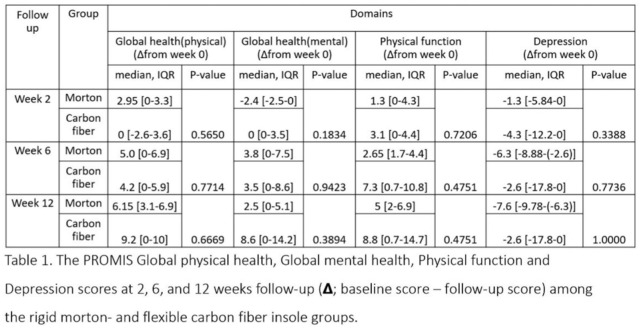Abstract
Category:
Midfoot/Forefoot
Introduction/Purpose:
Rigid orthotics play an important role in the non-operative management of hallux rigidus. However, compliance can be low due to pain and discomfort. We hypothesized that patients with hallux rigidus who wear a carbon fiber orthotic that maintains some flexibility will report reduced pain, higher physical function, and higher compliance rates when compared with a more traditional, rigid Morton's extension insole.
Methods:
Four males and nine females (mean age of 56 years; range 35-79) diagnosed with unilateral 1st metatarsophalangeal arthritis were included in this randomized controlled trial. Participants randomly received either bilateral flexible carbon fiber insoles (VKTRY) (n=7) or unilateral Morton's extension insole (n=6). Outcome measures included patient self-reported compliance, comfort rate, and Patient-Reported Outcomes Measurement Information System (PROMIS) questionnaires Global Health, Pain Interference, v1.0 Pain Intensity, v2.0 Physical Function, and v1.0 Depression. Participants filled out questionnaires at the onset of the study and at two, six, and twelve weeks follow-up.
Results:
Compared to Morton's extension insole, use of flexible carbon fiber insole led to reduction of pain interference score at 6 and 12 weeks (median ∆∆ -9.5 vs 0.0 p=0.015; and median ∆∆ -15.1 vs -2.3 p=0.015, respectively), as well as reduction of pain intensity score at 6 and 12 weeks (median ∆∆ -11.9 vs -2.3 p=0.018; and median ∆∆ -11.9 vs -2.3 p=0.010, respectively). The compliance rate in flexible carbon fiber insole group was 100% at 2, 6 and 12 weeks, compared to 83%, 83% and 50% in the Morton group. In addition, patients wearing carbon fiber insoles experienced higher comfort levels (p-values ranging from <0.001 to p=0.007). There were no differences between the comparison groups at 2, 6, and 12 weeks in terms of the global health, physical function, and depression scores.
Conclusion:
Patients diagnosed with hallux rigidus may benefit from wearing more flexible carbon fiber insoles as compared to the traditionally used rigid orthotic insoles, such as the Morton's extension. Such inserts may better balance the need for mechanical shielding of the hallux while allowing some motion as, for example, occurs in the interphalangeal after fusion procedures.
Keywords: 1st MTP Joint, Hallux Rigidus, Outcomes Measures




